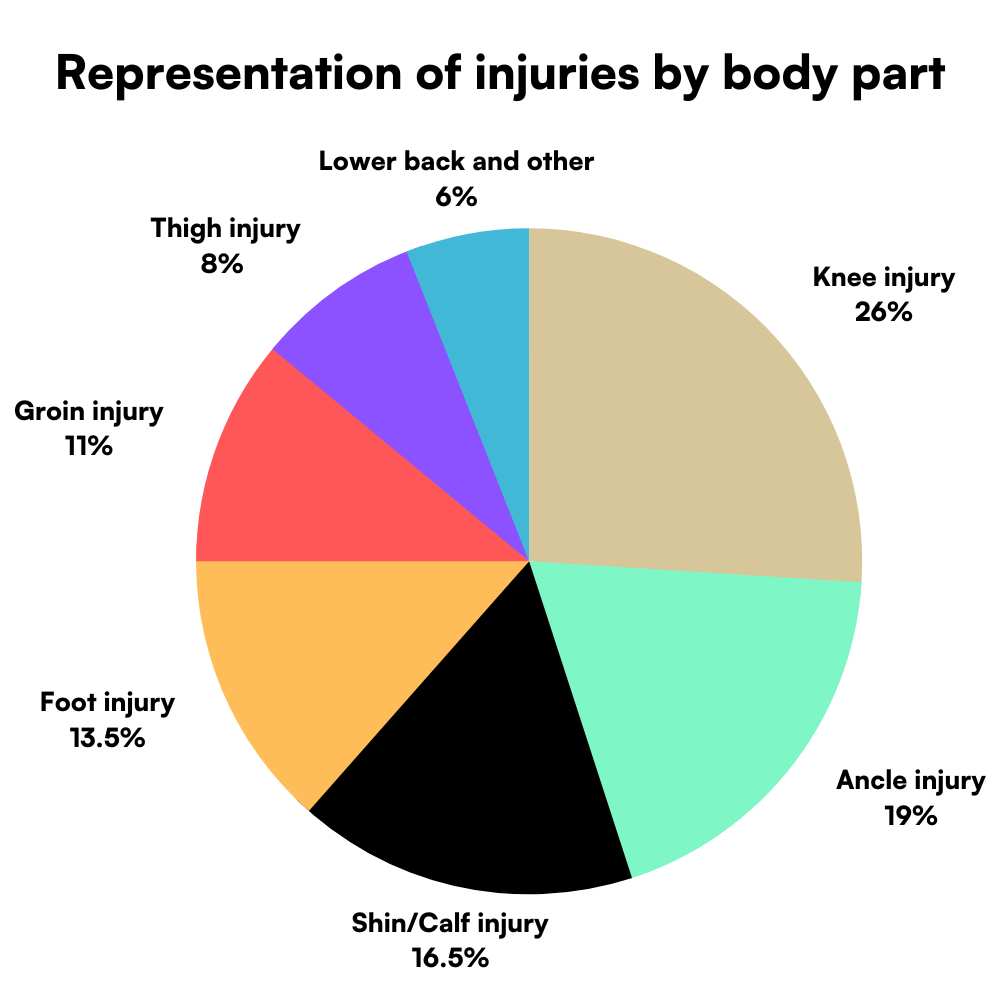Running is one of the most popular sports worldwide. All you need is a good pair of shoes, and you can take them anywhere. It's a very effective way to improve your fitness or shed some pounds. Unfortunately, it is fraught with frequent injuries, especially to joints, muscles, and the lower back.
Summary:
- High incidence of injuries in runners: up to half of all runners face a running-related injury each year, with a quarter of all active runners being treated for an injury at any given time;
- Most common injuries: the most common running-related injuries affect the knee (26%), ankle (19%), and shin (16.5%), with specific diagnoses such as runner's knee, Achilles tendon injury, and tibial rim syndrome;
- Predisposition to injury: there are factors that may predispose runners to a higher risk of injury. These factors include abnormalities in the structure of the foot arch, faulty footfalls, and weakness of certain muscles of the lower limb;
- Injury prevention: to prevent running injuries, it is important to have a thorough warm-up and warm-down before running, good-quality footwear, possibly orthotic insoles for those with foot arch problems, correct running technique, and a gradual increase in running distance;
- Don't blindly increase the distance: most injuries, up to 72%, are caused by running distances for which the runner's musculoskeletal system is not yet sufficiently trained. It is important to listen to your own body and not run through pain.
Did you know that half of all runners experience a running-related injury each year? At any given point in the year, about a quarter of active runners are being treated for an injury. Between 70% and 80% of injuries are most likely caused by sustained overuse of the musculoskeletal system while running (1).

The most commonly injured joints and the most common diagnoses
Many studies conducted on runners have put together data on how often and what parts of their bodies are most commonly injured. Studies have been conducted on male and female runners of different ages, weights, and distances. Below is a ranking of the most commonly injured joints and specific diagnoses (2). We write specifically about each injury in separate articles; see the articles through the attached link.
26% - Knee injury
- Patelofemoral syndrome (Runner's Knee)
- Iliotibial syndrome (ITB Friction Syndrome)
- Tear or rupture of the meniscus
- Patella tendinopathy
Learn more details about all types of knee injuries from running, the method and duration of treatment along with tips for recovery in a special article here.
19% - Ankle injury
- Achilles tendon injury
- Ankle sprain
16,5% - Shin/Calf injury
- Tibial edge syndrome (Shin splints)
- Sprains and other injuries to the muscles of the tibia
- Calf muscle strain
13,5% - Foot injury
- Heel spur and plantar fasciitis
Learn more about heel and foot pain from running and the possible development of heel spurs in a special articlehere. You'll learn the causes of heel injuries, information on the length of treatment along with recovery tips.
11% - Groin injury
- Groin muscle strain
- Inguinal hernia
8% - Thigh injury
- Tendon injuries of the thigh muscles
- Thigh muscle strain
6% - Lower back and other
- Stress fractures
- Injuries of the lumbar spine
Predisposition to frequent injuries
There are some people who are more likely to get injured while running. Studies show that runners with various deviations are more likely to suffer running-related injuries. These predispositions includebowed and flat foot arches, faulty striding with excessive pronation or supination of the foot, O or X-legs, different leg lengths, or even laxity of one of the muscles of the lower limb (1).
Prevention of running injuries
Before the start of the run, it is necessary to warm up the joints and muscles before we put on a high load. It is good to wear good-quality shoes, and for people with arch problems, it is good to use orthopaedic insoles. In terms of the run itself, technique and gradually increasing the distance are, of course, important. Up to 72% of injuries are caused by running distances for which the musculoskeletal system is not yet sufficiently trained. The key is to listen to your body and not run through pain (1).
References:
- Fields, Karl B et al. “Prevention of running injuries.” Current sports medicine reports vol. 9,3 (2010): 176-82. doi:10.1249/JSR.0b013e3181de7ec5
- Kakouris, Nicolas et al. “A systematic review of running-related musculoskeletal injuries in runners.” Journal of sport and health science vol. 10,5 (2021): 513-522. doi:10.1016/j.jshs.2021.04.001)


 CZK
CZK
 EUR
EUR
 EUR
EUR
